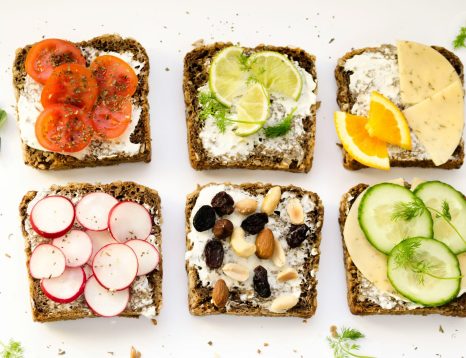
The holidays are just around the corner and the holiday invitations have already begun. These days, treats dominate, which are usually foods rich in sugar and fat, as well as plenty of alcohol. But what can we do so that we do not deprive ourselves of the festive treats and sweets but also do not deviate from our diet plan that will lead to changes in the number on the scale?
First of all, the holiday season marks the cessation of all work, even dieting! During this period we try to maintain our weight and try all the foods offered, enjoying our company and family, but observing moderation in the quantity and frequency of their consumption. Besides, the tasty result is the same whether we consume a small piece or a small pan of our favorite Christmas dessert or food.
When it comes to festive tables, try not to go to them hungry. Eat your breakfast regularly so that you don't arrive at the table hungry enough and consume a large amount of food too quickly. Put what you want to eat on your plate from the beginning, so that the plate is full and satisfying! Treat your plate as a circle, half of which should be filled with vegetables (salad or stews/boiled dishes), a quarter of the plate with protein-rich sources (meat, poultry, fish, cheese) and the other quarter with carbohydrate-rich foods (pasta, potatoes or baked goods). Prefer seasonal or festive foods and not those you consume on a daily basis such as bread or pasta, so that you can try everything and not get unnecessary calories from foods that you eat often, considering that this way you are more careful. Be especially careful during the period between Christmas and New Year, avoiding keeping temptations at home or decorating plates with sweets or nuts in the dining room with which you have direct eye contact. Return to your classic daily diet that will include more vegetables, legumes and pasta as well as fruits instead of sweets, in contrast to the festive meat eating and consumption of many sweets. This will help you to return to your previous weight and will also overcome the retention that has been created by the additional consumption of salt, sugar and alcohol.
Regarding festive sweets and the eternal battle between melomakarono and kourabie, we prefer melomakarono due to its greater nutritional value. Melomakarono contains vegetable fats, such as olive oil and walnuts, which are an excellent source of monounsaturated fats and antioxidant vitamins. In addition, honey and walnuts are a source of vitamin B complex, which helps our nervous system. Even cinnamon helps reduce the glycemic index and contains a small amount of iron. In contrast, kourabies contain animal fat, animal butter which contains saturated fat and is considered harmful to our health. In terms of calories, a traditional melomakarono without a coating yields similar calories to a kourabie of the same size, ranging from 130-180 calories.
Also, alcohol is what flows abundantly these days. Try to consume it in moderation and prefer wine or beer instead of heavier drinks. Make sure to consume food and water at the same time, so that you do not have symptoms of intoxication and to avoid gastrointestinal symptoms. In general, do not neglect your adequate hydration during the festive days and do not use alcohol to quench your thirst. The risk of dehydration is higher these days, due to the high consumption of salty foods and alcohol that cause fluid retention.
Finally, try to maintain a good level of physical activity with leisurely strolls in the festive atmosphere of the city or an excursion that includes walking or even showing off your favorite dance moves!
Either way, this holiday season, enjoy the company of your loved ones and don't count calories and fat!
Happy holidays to everyone!

Clinical dietician, MSc., PhDc.










